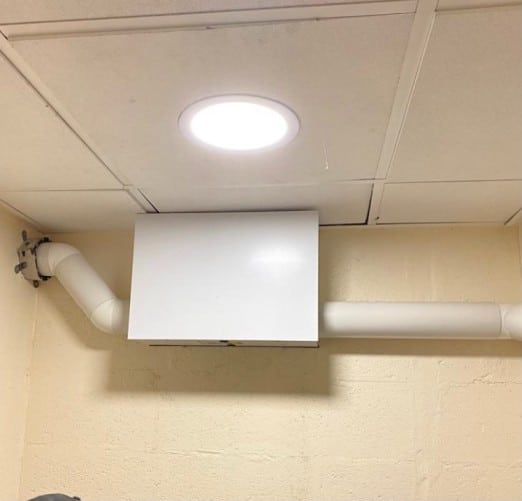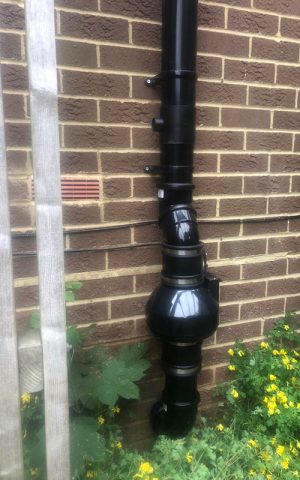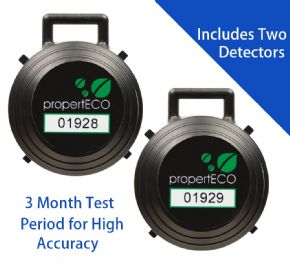Radon gas is an occurrence in homes that cannot be ignored – but like many things, with more and more people becoming aware of radon gas it has given rise to a number of urban myths and misconceptions that can mislead people.
Here, we hope to expose some of the common myths surrounding radon and provide you with the facts that can set you on a path to a better understanding of the threat that radon gas poses to you.
Remember, if you have a question that hasn’t been answered below, all you have to do is give our team a call on 0800 046 6193, and they will be happy to talk to you about anything and everything radon related.
Myth 1: Radon Might Not Be That Dangerous
The very first myth we want to address surrounding radon is the belief that radon is not actually that dangerous to people.
Radon is in fact the second highest cause of lung cancer, sitting only behind smoking as a cause. Whilst smoking remains the predominant cause of lung cancer, increasing numbers of non-smokers are being diagnosed with the disease.
Overall, around 3.5% of all lung cancer deaths in the UK can be attributed to radon exposure. Those people who tell you that radon is not a threat to people, or that it can be ignored and you should simply live with do not have your best interests at heart or are ill informed.
At its core, radon is a radioactive gas, and that in itself is very dangerous. According to Public Health England: ‘Radon produces tiny radioactive particles in the air we breathe. Radiation from these particles damages our lung tissue, and over a long period may cause lung cancer.’
Obviously, this is a cause for concern, and it goes without saying that the higher the level of radon present, and the longer the exposure to the radon is, the greater the chance of developing lung cancer.
It’s also worth noting that there is an even greater risk if you are exposed to high levels of radon and are a smoker or ex-smoker.
Myth 2: High Radon Levels Are Only Present in Certain Areas of the UK
Again, this is not true.
Radon is present across the UK, and whilst it would be true to say that certain areas of the UK are more affected than others, sometimes by large amounts, it would be misleading to claim that radon isn’t present throughout the country.
To understand why, just think about where radon actually comes from. It originates in the uranium found in rocks and soil within the earth’s crust, which over time break down and release this radioactive gas into the air as tiny particles.
With radon being formed out of the naturally occurring radioactive material within the ground, it’s easy to understand why it can be present across the whole country, and indeed worldwide.
The concentration of uranium in different geologies, as well as how easily gas can move through the various types of rocks and soil we have in the UK impacts how likely it is that high levels will be found in any given area.
Radon is present outside however is diluted to a low concentration in the open air. When it is allowed to enter a building and accumulates undetected to high levels, that is where the risks begin.
You can check out a predictive radon gas map of the UK created by Public Health England to see what the probability of having high radon levels in your area is.
It’s important to remember though that simply because high radon levels are common in your area, it doesn’t mean that radon levels are going to be high in your specific property. The opposite is true as well, but for an accurate assessment of the radon level in your home, you will need to carry out a radon test.
Myth 3: If a Neighbour Has Low Radon Levels, I Will Too
Another falsehood. Indoor radon levels are influenced by several factors, including the amount of uranium in the earth beneath a property, the pathways available for gas to move through the ground, the floor type of the building and occupation factors such as heating and ventilation.
There may be a large crack deep in the earth that leads directly beneath your property but bypasses your neighbour’s. Your neighbour may like to leave their windows open all day, whilst you crank up the heating.
There are lots of variables that could make two neighbouring properties radon levels vary, even if the properties are identical age and design, so no matter what your neighbours’ levels are, you will need to conduct your own test to be certain of your own radon levels and decide if further action and mitigation should be taken.
Myth 4: Drinking Water Can Be a High Source of Radon
As radon is a water-soluble gas, it is possible for it to be found in water. In the UK, if your water comes from a public water supply, your water provider will monitor for radon and take any appropriate action so you do not need to worry about this.
If your property makes use of a private water supply however, that’s a little different. Contact your local authority for advice on testing your water for radon, and potentially contact the Drinking Water Inspectorate for advice on how to mitigate a private water supply.
Most of the exposure from radon in a private water supply will come not from drinking the water but rather from inhaling the decay particles when showering or bathing.
Myth 5: Properties Cannot Have Their Radon Levels Lowered
This is absolutely not true. Never buy into the myth that there is nothing you can do to mitigate the radon levels in your home, so there is no point in testing.
If you have conducted a radon test and found that your property is above the action level as advised by Public Health England of 200 becquerels per metre cubed (200 Bq m-3) then there are a number of steps you can take to lower that radon level through mitigation.
The two main methods of radon mitigation involve either the installation of a radon sump, or the installation of a positive pressure system.

Both of these solutions work to reduce radon levels in different ways by altering the difference in air pressure between the building and the ground. A radon sump involves creating a small void in the ground beneath the property which becomes the lowest point of pressure and subsequently draws the radon gas in the ground to it. Once in that space, the radon sump can safely exhaust the radon gas by using a combination of an exhaust pipe and a fan.
A positive pressure system works by drawing in fresh air from the exterior of the building and gently pushing clean, filtered air through your property. This in turn increases the air pressure ever so slightly which reduces the ‘vacuum’ effect (called advection) which otherwise draws soil gas in through the floor.
A positive pressure system, also known as positive input ventilation or PIV, also has the benefit of improving overall indoor air quality as it provides frequent air exchange.
We have a team of experts ready to help with your radon mitigation – just call 0800 046 6193.
Myth 6: Once Radon Mitigation Has Been Installed, You Don’t Need to Test Again

Radon mitigation is of course important, and once it has been carried out you will certainly rest easier knowing that action has been taken. That doesn’t mean though that you can switch off entirely when it comes to radon presence and detection though.
Once you have had radon mitigation measures installed, you will want to carry out another radon test to make sure that your mitigation solution is effective. Testing your home once your mitigation is in place as a comparison metric to measure against your pre-mitigation levels is important to ensure all is working well. We always include post-mitigation radon detectors in our quotations for mitigation works.
Carrying out a radon test around every two years following the installation will give the added peace of mind that the system is continuing to function correctly. The results of the test may also identify if the mitigation system is in need of maintenance.
It’s well advised then, to set up a maintenance schedule to coincide with those bi-annual tests. You can arrange with our team to have a consistent maintenance schedule put in place for your property and its radon mitigation equipment, so that you can remain safe in the knowledge your equipment is maintained by experienced radon professionals. Call us on 0800 046 6193 to arrange your maintenance schedule today.
Myth 7: Radon Tests are Tricky and Expensive
This is false on both counts, and far from the truth.
In fact, you can visit our radon shop today and order a radon test kit which tests for 3 months at only £39.60. Completing the test is straightforward too, with easy step by step instructions included.
Simply place the test kits in your property as described and record the date and test locations on the paperwork that is included. Then, once you have waited for the specified period of time (typically three months for the most accurate test result), simply return your test kits in the post where they will be analysed at our independent, third party laboratory. The laboratory is validated by Public Health England.
You will usually receive results of your radon test 10 working days following the receipt of your test kits by the lab – but often results are available faster than this.
That’s all there is to it.
If you’re in a hurry, you can also purchase test kits that take less time to produce an indication of your radon levels, 10 day screening test kits. These kits provide more of a ‘snapshot’ of the radon levels during the test period, rather than a long term average, so where possible you should follow a short-term test up with a full three month test to confirm the annual average concentrations.
If you do find that radon levels are of concern, just arrange a radon survey with our team to discover what method of radon mitigation will be best to help your property reduce its radon levels below the target levels set by Public Health England.
If you are ready to learn what measures to take to best reduce your properties radon levels, call 0800 046 6193 or contact us online for one of our team to call you back.



